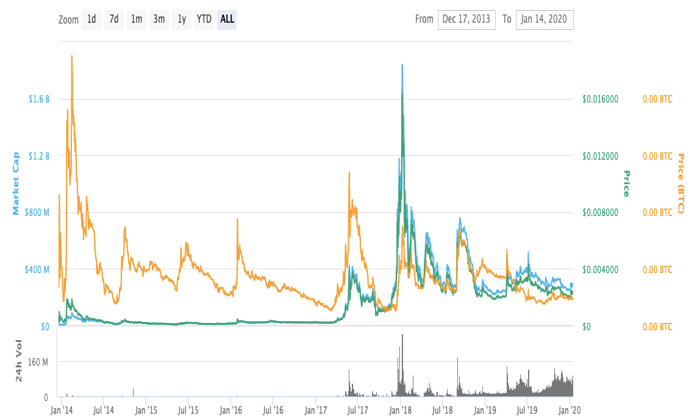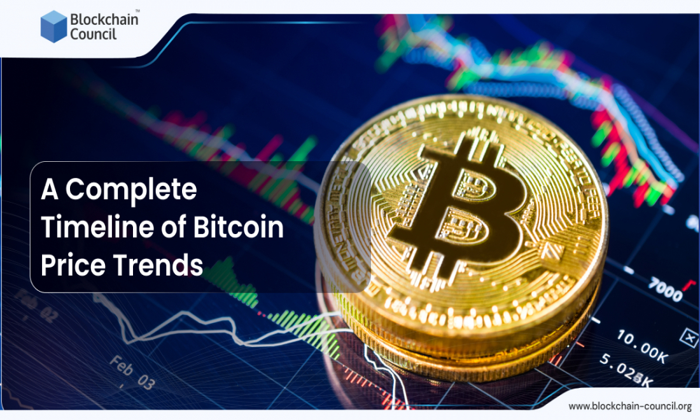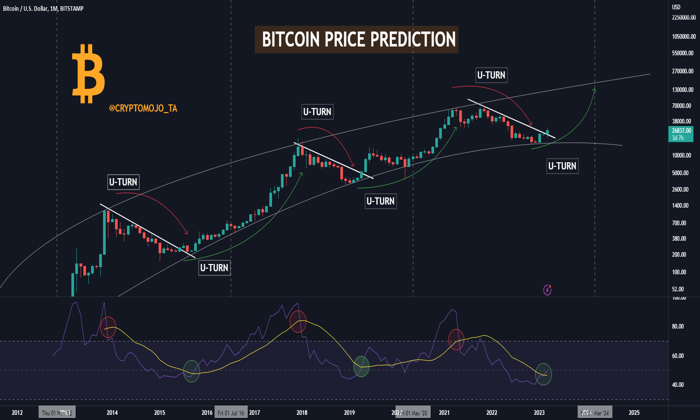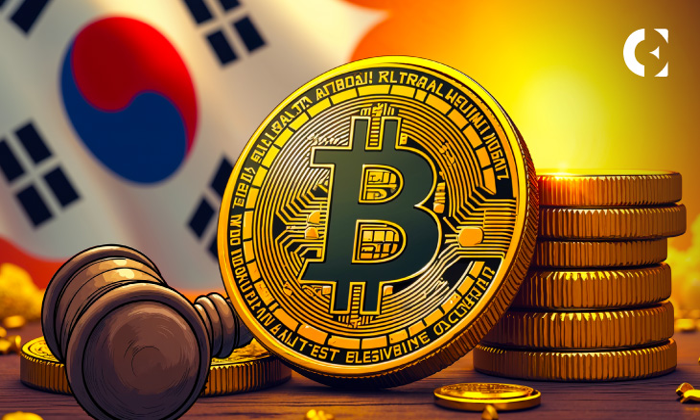Bitcoin as an uncorrelated asset is emerging as a focal point for investors seeking refuge in turbulent times. According to Jay Jacobs, the US Head of Equity ETFs at BlackRock, Bitcoin’s price behavior remains largely independent of traditional equity markets, with correlations hovering around a mere two to three percent. This intrinsic detachment implies that when market volatility escalates, Bitcoin thrives, positioning it as a vital component in diversified portfolios amidst prevailing economic uncertainties. Furthermore, the rising trends in crypto investment and significant Bitcoin ETF inflows underscore a shifting paradigm where hard assets like Bitcoin are favored amid geopolitical turmoil. As the world faces increasing instability, Bitcoin stands out as a resilient alternative, promising to deliver returns uncorrelated with the prevailing financial benchmarks.
Exploring Bitcoin’s role as an independent financial asset offers insights into its burgeoning popularity in these uncertain times. The cryptocurrency landscape is witnessing a notable shift, with many investors turning towards uncorrelated instruments like Bitcoin to hedge against market fluctuations. As global markets grapple with instability, Bitcoin’s unique position allows it to operate outside the traditional stock and bond arenas. The recent surge in Bitcoin ETF investments highlights the growing recognition of crypto assets as viable alternatives to conventional investment strategies. In this evolving context, Bitcoin not only represents a digital currency but also signifies a strategic asset that unifies trends in the broader financial ecosystem.
Understanding Bitcoin as an Uncorrelated Asset
Bitcoin’s value proposition as an uncorrelated asset becomes increasingly relevant in today’s tumultuous economic landscape. According to Jay Jacobs, the US Head of Equity ETFs at BlackRock, Bitcoin’s behavior starkly contrasts with traditional equities. While stocks flourish under conditions of growth and low geopolitical tension, Bitcoin’s allure lies in its resilience during times of uncertainty. This principle is founded on the observation that the correlation between Bitcoin and US tech stocks hovers around a mere two to three percent, suggesting a decoupling effect that makes Bitcoin a prime candidate for diversifying portfolios seeking refuge from volatility.
Investors are increasingly turning to Bitcoin as a hedge against market instability, with Jacobs stressing that demand for uncorrelated assets like Bitcoin and gold surges when uncertainty prevails. The influx of funds into Bitcoin ETFs underscores this trend, as investors look for alternatives that can behave independently from stocks and bonds. As geopolitical factors shape market dynamics, Bitcoin’s role as a stabilizing force in an investment portfolio becomes more apparent, making it a crucial asset to consider for those looking to mitigate risks.
The Impact of BlackRock’s Bitcoin Strategy
BlackRock’s strategic stance on Bitcoin represents a significant evolution in institutional investment behaviors. The firm’s endorsement of Bitcoin as a viable uncorrelated asset has provoked a notable surge in Bitcoin ETF inflows, with their iShares Bitcoin Trust (IBIT) absorbing a remarkable $643 million in a single day. This momentous shift reflects investor sentiment that is increasingly favoring hard assets like Bitcoin amidst global uncertainty and inflationary pressures. BlackRock’s substantial influence in the financial markets ignites further interest from both retail and institutional investors alike.
Moreover, BlackRock’s unique position—managing $11.6 trillion in assets—allows it to pioneer trends within the crypto investment landscape effectively. Their framework, emphasizing geopolitical fragmentation and its relationship to asset value, suggests that Bitcoin’s ascent is rooted in broader economic shifts. As investors reposition their portfolios in anticipation of future disruptions, BlackRock’s Bitcoin strategy is not merely a tactical decision but part of a comprehensive vision to harness the evolving dynamics of uncorrelated assets.
Analyzing Bitcoin Price Behavior Amidst Market Changes
Bitcoin’s price behavior is intrinsically tied to broader market dynamics and investor sentiment. As highlighted by Jacobs, significant market stress can obscure the true value of Bitcoin, which thrives under conditions of instability and uncertainty. The recent rally—pushing BTC prices close to $94,000—illustrates how strategic moves, such as the approval of Bitcoin ETFs, can catalyze dramatic price shifts, exemplifying Bitcoin’s potential for remarkable returns even amidst market turbulence.
Investors appear to be responding to these price movements by actively reallocating funds toward uncorrelated assets. The substantial inflows into Bitcoin and gold reflect a growing recognition that these assets fulfill a crucial role in safeguarding portfolios against volatility. As the landscape of crypto investment trends evolves, Bitcoin’s behavior becomes a key indicator of market sentiment, revealing valuable insights about investor expectations and the broader economic climate.
The Growing Importance of Uncorrelated Assets in Investment Strategies
The growing importance of uncorrelated assets in investment strategies is underscored by recent trends highlighting the desire for diversification. As geopolitical tensions rise and economic uncertainty looms, investors are actively seeking alternative assets that can function independently of traditional markets. This shift toward Bitcoin and gold as protective measures signifies a fundamental change in how investors approach risk and asset allocation, ensuring their portfolios remain resilient against unpredictable market conditions.
Moreover, central banks worldwide are contributing to this trend by diversifying their reserves, moving beyond just holding U.S. dollars. The increasing net purchases of gold and the emergence of Bitcoin as a reserve asset indicate a strategic pivot towards assets perceived as having inherent stability. As more institutions embrace this shift, the narrative surrounding uncorrelated assets will likely gain momentum, solidifying their role in modern investment frameworks.
Examining Crypto Investment Trends During Economic Uncertainty
As economic challenges increase, so do the trends in crypto investments, with Bitcoin often taking center stage as a leading indicator of market sentiment. During uncertain times, investors tend to favor assets with distinct behaviors that counteract traditional investments. Recent patterns have demonstrated a marked preference for Bitcoin amid this volatility, suggesting that investor confidence in cryptocurrencies is becoming more sophisticated and strategically aligned with long-term objectives.
Furthermore, the inflows into crypto assets reflect a broader acknowledgment of their potential to act as a viable hedge against inflation and systemic risk. The alignment of Bitcoin with trends in gold investments showcases the growing perception that digital assets can play a significant role in an asset manager’s portfolio, providing essential diversification and potential returns. Observing these trends helps market participants navigate the changing landscape of investment opportunities, signaling the need for adaptive strategies.
The Role of Bitcoin ETF Inflows in Market Evolution
Bitcoin ETF inflows represent a pivotal development in the evolving landscape of cryptocurrency investments. As institutional and retail interest surges, the emergence of ETFs has provided a structured way for investors to gain exposure to Bitcoin without directly purchasing the asset. BlackRock’s significant inflows into their Bitcoin ETF stand as a testament to the growing acceptance and integration of Bitcoin within mainstream financial settings, breathing new life into market dynamics.
The fact that Bitcoin ETFs attract substantial investment reflects shifting investor perceptions regarding the safety and legitimacy of cryptocurrencies. As ETFs simplify the process of entering the Bitcoin market, they open doors for a wider range of investors, amplifying demand. This progression highlights how innovative financial instruments are driving the adoption of Bitcoin, thereby reinforcing its status as an uncorrelated asset that appeals in times of economic uncertainty and adds complexity to traditional investment frameworks.
Geopolitical Forces Shaping Bitcoin’s Marketplace
In an increasingly interconnected world, geopolitical forces are playing a significant role in shaping Bitcoin’s marketplace. As outlined by BlackRock’s Jacobs, the diversification of assets among central banks reflects a broader trend influenced by geopolitical concerns—offering a rationale for Bitcoin’s rising prominence. As nations navigate the complexities of global politics, investors are looking for alternative stores of value, leading to an increased demand for Bitcoin as a form of security against currency fluctuations and regional disruptions.
This geopolitical fragmentation not only fuels interest in Bitcoin but also encourages a reevaluation of investment strategies on a global scale. Investors are recognizing the importance of safeguarding their portfolios through the inclusion of uncorrelated assets like Bitcoin, which can provide a hedge against instability. As this evolution continues, the relevance of Bitcoin as a strategic asset will likely become more pronounced, embedding it deeply into the fabric of investment behavior amidst global uncertainties.
BlackRock’s Mega-Forces Framework and Bitcoin’s Future
BlackRock’s mega-forces framework illustrates the long-term trends influencing investment decisions, with Bitcoin positioned prominently within this context. As Jacobs articulated, geopolitical fragmentation is emerging as a major factor driving the need for diversification beyond conventional assets. This recognition not only reinforces Bitcoin’s status as an alternative asset class but also underscores a pivotal shift in asset allocation strategies being employed by major investors.
As this framework gains traction, Bitcoin’s potential for appreciation could very well correlate with the extent of global uncertainty. Investors are likely to seek out uncorrelated assets like Bitcoin to counterbalance the growing volatility associated with traditional financial markets. Understanding these mega-forces allows investors to anticipate changes within the marketplace, positioning Bitcoin not just as a speculative investment but as a core component of contemporary portfolio management.
The Future Outlook for Bitcoin and Investment Strategies
The future outlook for Bitcoin rests on the interplay between market forces and global events that shape investor behavior. As firms like BlackRock advocate for the inclusion of Bitcoin as a key uncorrelated asset, the narrative surrounding cryptocurrencies will likely evolve. Continued inflows into Bitcoin ETFs suggest sustained interest, highlighting the shift towards recognizing Bitcoin as a legitimate part of an investment strategy aimed at mitigating exposure to traditional market risks.
Moreover, as economic uncertainties persist, investors are inclined to seek uncorrelated assets that can provide a buffer against volatility. Bitcoin, with its growing acceptance among institutional investors, stands poised to capture an expanding share of investment capital in the coming years. This trajectory emphasizes the potential for Bitcoin not only to appreciate in value but also to solidify its role as a fundamental asset in diversifying portfolios globally.
Frequently Asked Questions
How does Bitcoin function as an uncorrelated asset in investment portfolios?
Bitcoin is considered an uncorrelated asset because its price behavior tends to diverge from traditional asset classes, such as US tech stocks. According to Jay Jacobs from BlackRock, the long-term correlation between Bitcoin and these stocks is only about 2% to 3%. This low correlation means Bitcoin can provide diversification, especially during times of market stress when investors seek assets that behave differently.
What factors contribute to Bitcoin being classified as an uncorrelated asset?
Several factors contribute to Bitcoin’s classification as an uncorrelated asset. Bitcoin thrives in situations of uncertainty and geopolitical risk, in contrast to equities that benefit from higher growth and certainty. As economies face turmoil, Bitcoin attracts investors looking for a hedge, resulting in its price resilience and differentiated behavior compared to traditional investments.
How do crypto investment trends reflect Bitcoin’s status as an uncorrelated asset?
Crypto investment trends indicate a shift towards viewing Bitcoin as an uncorrelated asset, driven by increasing geopolitical uncertainties. With significant inflows into Bitcoin ETFs and other hard assets, investors are reallocating their portfolios to include assets like Bitcoin that are expected to behave independently from traditional stock markets.
What role does BlackRock’s Bitcoin strategy play in the perception of Bitcoin as an uncorrelated asset?
BlackRock’s Bitcoin strategy reinforces the perception of Bitcoin as an uncorrelated asset by linking its price behavior to broader market conditions. The firm’s significant ETF inflows and emphasis on Bitcoin’s ability to thrive amid uncertainty highlight how institutional investment is reshaping the narrative, suggesting that Bitcoin can act as a safe haven against economic instability.
Can Bitcoin ETF inflows affect its value as an uncorrelated asset?
Yes, Bitcoin ETF inflows can influence its valuation as an uncorrelated asset. As recognized by BlackRock, increased investor interest evidenced by substantial ETF inflows can drive Bitcoin’s price higher, reinforcing its position in the market. This dynamic underscores Bitcoin’s role in portfolios seeking assets that perform differently from traditional equities, especially as global uncertainty grows.
Are Bitcoin’s price movements linked to traditional markets, and how does that affect its status as an uncorrelated asset?
While Bitcoin may experience short-term price movements linked to traditional markets, its long-term behavior suggests minimal correlation. As Jay Jacobs stated, factors affecting traditional equities do not typically influence Bitcoin in the same way. This divergence enhances Bitcoin’s appeal as an uncorrelated asset, especially in uncertain economic climates.
| Key Points | Details |
|---|---|
| Bitcoin’s Value | Bitcoin is seen as an uncorrelated asset that can prosper in uncertain times. |
| Low Correlation with Stocks | The long-term correlation between US stocks and Bitcoin is only about 2-3%. |
| Market Behavior | Bitcoin thrives amidst uncertainty, which contrasts with the factors driving equities higher. |
| Inflows into Bitcoin and Gold | Investors are moving towards assets like Bitcoin and gold for diversification as uncertainties grow. |
| Geopolitical Trends | Central banks are diversifying their reserves beyond US dollars to include gold and Bitcoin. |
| BlackRock’s Influence | With $11.6 trillion under management, BlackRock’s support of Bitcoin strengthens its perceived value. |
Summary
Bitcoin as an uncorrelated asset presents a compelling opportunity for investors seeking alternatives amid rising global uncertainties. BlackRock’s examination of Bitcoin highlights its potential to thrive when traditional markets are under stress, underscoring its low correlation with US stocks. As geopolitical tensions escalate, Bitcoin’s role as a safe haven reflects broader trends in investor behavior, with significant inflows into both Bitcoin and gold. This pivot towards uncorrelated assets is indicative of a shift in investment strategies, motivated by a desire for diversification in increasingly uncertain financial landscapes.
Bitcoin as an uncorrelated asset has emerged as a focal point for investors seeking alternative options amid market volatility. According to Jay Jacobs, BlackRock’s US Head of Equity ETFs, Bitcoin’s value thrives in uncertain environments, setting it apart from traditional tech stocks and reducing the long-term correlation to a mere two or three percent. This unique price behavior showcases Bitcoin’s potential as a hedge against geopolitical tensions, driving recent crypto investment trends and significant Bitcoin ETF inflows. As more investors pivot towards hard assets like Bitcoin, it reflects a strategic shift towards uncorrelated assets that weather the storm when market conditions get chaotic. Consequently, Bitcoin is rapidly becoming a key player in an increasingly diversified investment portfolio, particularly as central banks worldwide emphasize the need for asset protection.
When framing Bitcoin in broader terms, it is increasingly recognized as a distinct financial instrument that operates independently from conventional equities. This crypto asset illustrates a unique response to market dynamics, particularly in times of uncertainty where traditional assets may falter. Investors are increasingly drawn to this digital currency as they navigate complex economic landscapes, highlighting a diversification strategy that embraces alternative investments. The rise of Bitcoin ETFs is indicative of a larger trend where investors seek out non-correlated assets that can provide stability and growth. In essence, Bitcoin serves not just as a speculative vehicle, but as a vital element for portfolios aiming for resilience against market fluctuations.















